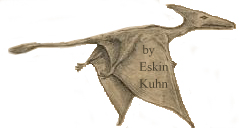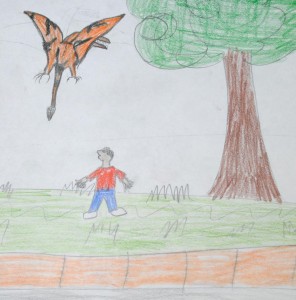 Something in our Western culture seems to say “unscientific,” whenever the subject of modern living pterosaurs comes up. It’s not the countless fossils sitting on countless shelves in countless laboratories and museums, for countless fossils are very similar to presently-living organisms. Could it be that we have been indoctrinated, for generations, into the idea that all dinosaurs and pterosaurs have been extinct for many millions of years? Indeed, that is what projects the feeling of “unscientific,” when an eyewitness reports a living pterosaur. The feeling is absent from natives of third-world countries, where the extinction dogma is absent. They have no problem with a living dragon.
Something in our Western culture seems to say “unscientific,” whenever the subject of modern living pterosaurs comes up. It’s not the countless fossils sitting on countless shelves in countless laboratories and museums, for countless fossils are very similar to presently-living organisms. Could it be that we have been indoctrinated, for generations, into the idea that all dinosaurs and pterosaurs have been extinct for many millions of years? Indeed, that is what projects the feeling of “unscientific,” when an eyewitness reports a living pterosaur. The feeling is absent from natives of third-world countries, where the extinction dogma is absent. They have no problem with a living dragon.
“Superstitious” cannot reasonably be used to dismiss native-eyewitess testimonies; their superstitions are left out of their testimonies. “Religious bias” cannot be reasonably used to dismiss American-eyewitness testimonies; the creationist researchers are not, for the most part, the eyewitnesses, but the creationists interview and quote those of various beliefs who describe obvious pterosaurs. And the testimonies of natives of Papua New Guinea coorelate with those of Americans and Australians: mostly large or giant flying creatures, with no sign of feathers and with very long tails.
Let us promote scientific investigations of reports of modern pterosaurs.
The sketch above was drawn by the eyewitness Eskin Kuhn, who observed two long-tailed pterosaurs flying in daylight over the Guantanamo Bay military station, in 1971.



